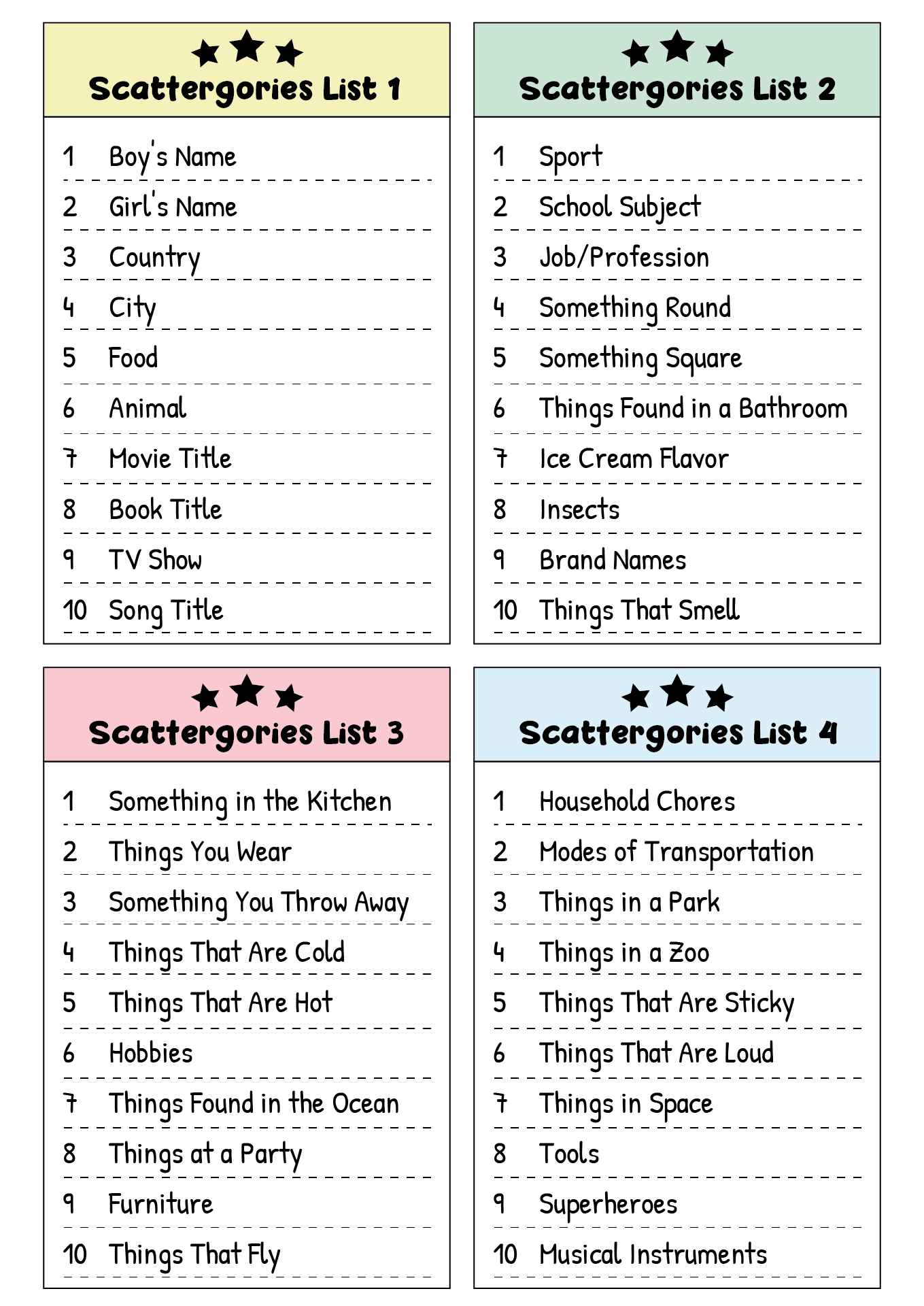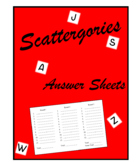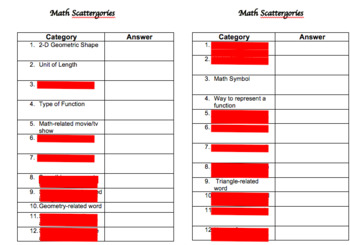
No player can use the same answer in the same round. There are a couple of other little twists to remember while playing.

At the end of 3 rounds the person with most points wins. If a letter is repeated, then simply throw the dice again to get a new letter. The player then resumes with another throw of the dice and the categories are again answered using the new letter. In case of a tie, the word is crossed off and no points are rewarded. If the majority rejects that answer then the player crosses that answer off. If the majority accepts the answer then the player scores that point. Once a challenge is made, a vote is taken to decide who thinks the answer is acceptable and majority rules. If anyone's answer does not seem to fit the category, then any other player can challenge that answer. You then the mark the number of unique answers you have for that round at the top of the paper. This continues until everyone has read their list. The next player then reads off any unique answers that he has left and players mark off those answers. Then the first player reads off their answers to each of the categories while the other players mark off any of their answers that matches the first player. When the timer goes off, everyone puts down their pencils immediately. Here are some examples of the categories you might see: The players then have three minutes to fill in an answer for each of the twelve categories.

The game starts when a chosen player rolls the 20 sided dice to determine what letter all the answers in the category list must start with and the timer is set. The twelve categories on the category list chosen are played for all three rounds of the game. Players must decide on which category card and list they are going to play prior to the start of the game. Two skills that are extremely useful in playing this game are the ability to think fast under pressure (because each round is timed), and a good general knowledge.īefore the game starts, each person should be given a game folder containing the answer sheet, which is divided into three sections for the three rounds of the game, and the category cards. The catch is that you only score points if your answer is completely different to all the other players.Īs the name of the game suggests, you are using a common letter to bring together a range of scattered categories. While this sounds simple enough, it isn't! The object of the game is to fill in answers in 12 different categories all starting with the same letter. There is a junior version of this game for children 7 to 12. It is considered a family or party game and is designed for 2 to 6 players ages 12 and up. There are quite a few programs and courses out there you can use to build your vocabulary this way, but if you want to know my absolute favorite Click Here.Scattergories is a board game developed by Hasbro in 1988. With younger players, you may want to accept any answer they give.Did You Know?Flashcards like these are my favorite way to learn new words. As with the other version, the group can decide if an answer is off-topic or not. However, if it is something that doesn’t necessarily go together such as “Wimpy Witch” then they would only get 1 point.Ĥ.

For example, if the letter was ‘W’ and the answer was “Wicked Witch” that would count for 2 points.

There is 1 point per answer unless they come up with a viable answer that has two words that starts with that letter. The player with the most answers wins the round. Then continue with letter B and so forth.ģ. Go around the group and have each person tell what they got for letter A. For younger kids, you may want to skip the timer and just let them fill it in.Ģ. Have players come up with an answer that starts with each specific letter. This is a more simple way to play and good for all ages. The above image is the Autumn Scattergories printable.


 0 kommentar(er)
0 kommentar(er)
